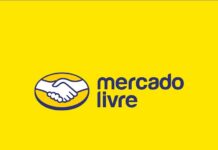Edson Perin
The third edition of the Global Connected Packaging Summit featured how the integration of technology in packaging can lead to a seamless connection between the digital and physical worlds. With technology influencing our behavior, emotions, and daily expenses, brands can leverage the power of connected packaging to offer more meaningful, unique, and exclusive customer experiences.
The Connected Experiences Survey 2023 showed a significant spike from 46% in 2022 to 81.5% in 2023 of brands that have already used Connected Packaging or will implement it in their plans for 2023-2024, showing that Connected Packaging is an expectation rather than an exception.
Over 5th-6th July, leading experts discussed the integration of QR Codes, NFC, Augmented Reality (AR), Artificial Intelligence (AI), ad technology, packaging and marketing with a substantial focus on innovation and sustainability, to create stunning results for the industry’s most prominent players.
The summit demonstrated that connected packaging provides a bridge between brands and consumers, offering opportunities for enhanced transparency, traceability, sustainability, and personalized experiences, despite challenges such as operational complexity and understanding ROI (Return on Investment).

During both days, the event gathered people across 66 countries who actively engaged in the discussions, posing a total of 79 questions to the panelists. Such global attendees and their questions showed the universal relevance and interest in sustainable practices, Connected Packaging, and the future of the packaging industry. Here comes a summary of the summit.
Day 1 – Jenny Stanley from Appetite Creative discussed the transformative power of connected packaging for consumer engagement, highlighting QR Codes and e-labels for compliance with new legislations. Peter Nitschke from Plastic Bank demonstrated the potential of blockchain in tackling plastic pollution and poverty, while foreseeing developments in AI, IoT, and gamification.
Sonia Pelacheva from Seaman Paper promoted paper over single-use plastic and emphasized the role of digital solutions in conveying sustainability initiatives. Phil Archer from GS1 spoke about the transition to two-dimensional barcodes and the potential of QR Codes as a media channel.
Ali Azhar of Tetra Pak focused on serialized QR Codes for enhancing traceability and customer engagement, forecasting trends like invisible codes and IoT integration. Sriman Banerjee from Takeda Pharmaceuticals stressed the importance of sustainability and patient safety in packaging, and Ryan Kiley from ePac Flexible Packaging introduced a platform for assigning digital identities to product pouches for supply chain management and consumer engagement.
In conclusion, Day 1 emphasized the importance of connected packaging, digital solutions, and sustainable practices in enhancing brand-consumer interactions, product traceability, and the fight against global issues like plastic pollution.
Day 2 – The Connected Packaging Summit hosted discussions around sustainable practices, connected packaging, and its transformational impact on the packaging industry.
Panelists, including Güneri Tugcu from Amazon, Lucas Silva from SIG Combibloc, Paul Jenkins from ThePackHub Innovation Zone, Pippa Guerra from Danone, Sukhdev Singh Saini from Colgate Palmolive, and Karan Rai from Ennoventure Inc, focused on various aspects of connected packaging. These include combating counterfeiting, increasing sales and consumer engagement, meeting consumer expectations through innovative experiences, and leveraging first-party data for personalized brand-consumer interactions.
Despite challenges such as supply chain complexities, operational difficulties, and understanding ROI, gradual implementation and pilot projects were encouraged. A unified code system was presented to simplify packaging and foster effective communication among stakeholders. This approach, combined with increasing consumer willingness to pay for sustainable packaging and the potential for enhanced consumer experiences, positions connected packaging as a transformative tool for the industry.
The adoption of advanced technologies for product authentication, including AI and invisible signatures, was highlighted as crucial in the digital marketplace. Despite challenges related to connectivity, device capabilities, and security risks, effective consumer education and attention to security can help brands leverage the benefits of connected packaging. These initiatives together contribute to a more secure, engaging, and sustainable future in packaging.
Gregor Murray from Kellogg Company highlighted the challenges of reuse strategies and the potential of deposit return schemes. He emphasized connected packaging technologies to improve recycling and the necessity for education and environmental awareness.
Virginia Muriel from Garcia Carrion Company focused on their commitment to sustainability through renewable energy, water conservation, and circular economy practices. She mentioned the company’s strides in eco-design and the launch of the consumer app, Apodictic.
Claire Rampen discussed the potential of reusable packaging systems and the role of software in managing data for the success of these systems, emphasizing transparency and consumer engagement.
Sukhdev Singh Saini from Colgate Palmolive underscored the importance of unified code systems in packaging at the Connected Packaging Summit. He outlined how this simplification can enhance communication between brands, consumers, and retailers.
He also spoke about the power of connected packaging, such as QR Codes, to engage consumers and provide information about sustainability initiatives, brand stories, and recycling methods on their own terms.
Despite the challenges of integrating these systems, Saini believes in the benefits of connected packaging, including its potential to verify sustainability claims, foster inclusivity, and generate data for supply chain optimization.
In a separate talk, Karan Rai from Ennoventure Inc. discussed the crucial role of authentication in today’s digital marketplace to combat counterfeiting. Rai stressed the need for robust packaging security through multiple layers and infrastructures that bridge physical products with digital systems.
He shared a case study highlighting the efficacy of advanced technologies like invisible signatures in combating counterfeiting. Rai also addressed the importance of leveraging connected packaging for consumer engagement, mentioning personalized experiences, loyalty programs, and the use of AR and VR. Despite challenges such as internet connectivity and security risks, Rai encouraged embracing these technologies for their potential in enhancing brand loyalty and offering a positive return on investment.



















